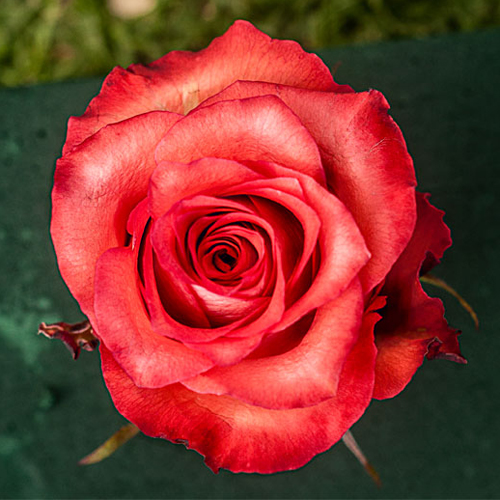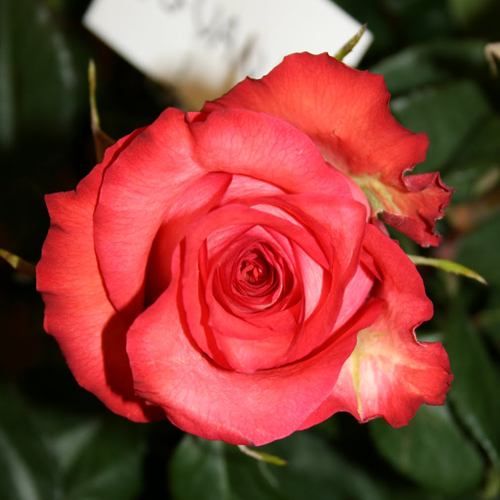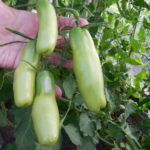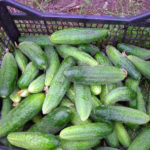Iguana rose
The classic rose is a regular-flowered plant that forms on the tops of long, straight stems. This is what tea hybrids usually look like. Iguana is a prominent representative of this group. This decorative perennial has unique features that distinguish it from other varieties.

History of appearance
The Iguana cultivar was created in the French rose nursery "Delbar". The noble beauty received the unusual name for a reason. The fact is that the fragrant flowers of this plant tease with their pleasant aroma only during daylight hours. With the onset of dusk and throughout the night, their smell is barely perceptible. This feature makes the queen of flowers look like a nocturnal iguana. Despite the fact that the rose is considered a hybrid tea, it is also listed in the group of cut varieties. Its buds are loved by florists, who actively include graceful flowers in elegant bouquets.
Description of appearance and features
Our heroine is a shrub with erect shoots, covered with a small number of sharp thorns, and smooth, shiny, bright green leaves. It reaches a height of 100, a maximum of 130 cm, in width it grows no more than 70 cm. Grace and grace is not the only advantage of a decorative perennial. Its main advantage is double, neat, two-colored flowers, 10-12 cm in diameter. The main color of flower petals is deep dark pink or orange-red. At the base, it changes to light yellow. Along the edges, there is a plum, terracotta or burgundy border. Rose buds are tight, strong, tall, with a diameter of 5 to 6.5 cm, goblet-shaped. When they open, they take the form of a rosette. Each flower is formed by about 40 velvety petals with a finely wavy edge, therefore it looks quite lush. The delicate aroma of lovely inflorescences combines the smell of ripe berries and hibiscus. The flowering of the shrub is abundant and long.
Iguana does not freeze when the air temperature drops to -30 ° C, which indicates its good winter hardiness. Also, the variety is very resistant to diseases and pests. The spectacular flowers of the noble plant are not afraid of rains and hardly fade in the sun. All this, coupled with the luxurious two-tone color of the buds, determines the overwhelming success of the Iguana variety among flower growers.

Growing and care
The sophisticated Frenchwoman prefers well-lit places, protected from gusty winds and cold drafts. It is necessary to plant a rose in a fertile, loose, fairly light soil with a neutral or slightly acidic reaction. The beauty cannot stand the stagnation of moisture in the ground, and therefore it cannot be placed in lowlands and in an area where groundwater comes too close to the surface of the earth. To plant a plant, you must first dig a hole at least half a meter deep. Then, on the bottom of the hole, you need to lay out a layer of drainage material: for example, a mixture of sand and fine gravel. Then organic fertilizers, vermicompost and soil are introduced into the pit. Only now they start directly planting the bush: it is lowered into a recess and, straightening the roots, is covered with the remaining soil. As a result of this procedure, the buds should be 5 cm below the soil level. The soil around the perennial should be tamped a little. Next, the plant is watered at the root.
Caring for the Iguana consists of regular watering, feeding and weeding. The plant also requires timely pruning, which is carried out in the spring, at the beginning of the sap flow phase, and in the fall, to prepare the shrub for wintering.Loosening and mulching of the soil in the zone of the trunk circle will be of great benefit to the rose. Below are some important tips for caring for your Iguana.
- Use only soft, room temperature water for irrigation.
- In the spring, apply organic matter under the rose bush, and in the summer, during the formation of buds and flowers on the plant, make a choice in favor of mineral fertilizers. Do the same a couple of weeks after the crop blooms. Mineral concentrate should contain a lot of phosphorus and potassium.
- In spring, remove dry, too weak and frozen shoots from the plant. Prune all branches of the plant in the fall. Remove dried leaves and flowers regularly in summer.
- Preparing a rose for cold weather consists not only in pruning, but also in hilling the shrub with dry soil, as well as in covering it with spruce branches for the winter.
- It is best to mulch the soil under the plant with stale humus or dry grass. But before each watering, it is necessary to remove the mulch to ensure the normal penetration of moisture into the soil.
Use cases
An adorable tea hybrid may well claim to be the central figure of your flower garden. To focus on this French variety, it should be planted in the foreground of the site, at the facade of the dwelling or the front entrance to the house. An ornamental shrub is suitable for decorating a hedge, for dividing a site into zones, for decorating a gazebo, for placement in mixborders and in classic flower beds. Worthy companions for this wonderful rose will be clematis, phlox, daylily, irises, heuchera, carnation, geranium, fragrant herbs and cereals, as well as conifers and evergreens. It goes well with other roses that have flowers of contrasting shades.
For cutting, Iguana is just perfect. Putting a bouquet of spectacular flowers in a vase of water, you can admire them for 12-16 days. During this time, the flower petals will not fade or crumble, and the flowers themselves will retain their original shape. A bouquet with the inclusion of Iguana inflorescences is a worthy gift for a loved one for any celebration and for no reason. The buds of the French diva will add romance to the atmosphere during a candlelit dinner for two.









There are many roses in my garden, but there are very few hybrid tea, since this group winters very badly in my climate - they have good frost resistance, but the plants suffer greatly from prolonged winter thaws, which occur several times during the winter. This variety "holds" better than the others, therefore it has been growing for me for the 8th year already - the ground part very often dies, but then the bush quickly recovers from the root, so I do not grow it on the rootstock, only on my own roots, since the variety is excellent cuttings. It is resistant to diseases; of the pests, only bronze beetles annoy.